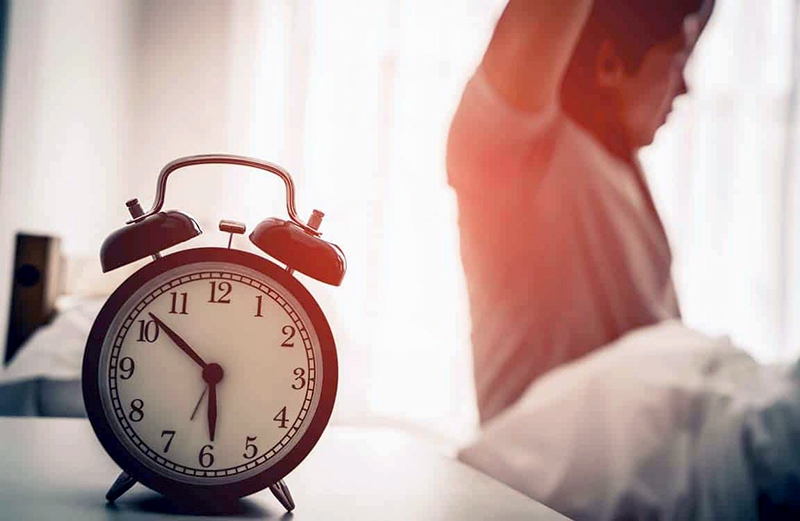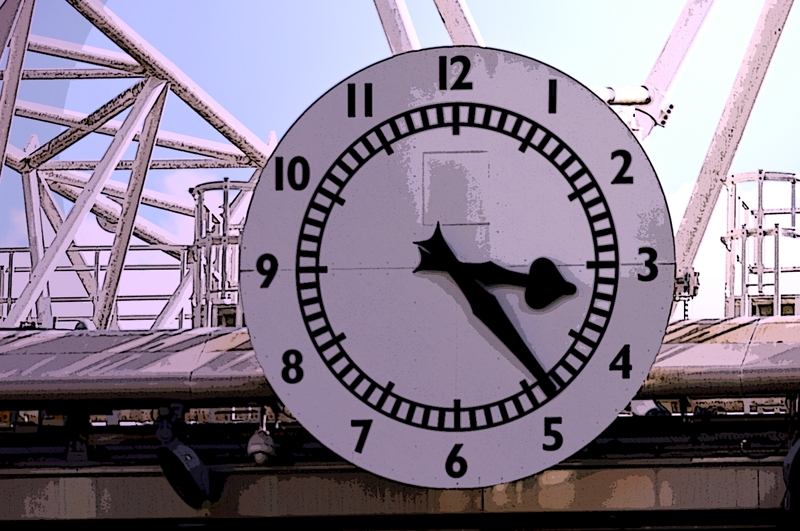You are viewing 1 of your 1 free articles. For unlimited access take a risk-free trial
Optimizing your body clock: lessons from the deep

Using lessons from the world of competitive swimming, Andrew Sheaff explains how all sportsmen and women can work with their body clock – not against it – for maximum competition performance
Most athletes partake in a regular training schedule. Whether it’s due to the availability of the required facilities, or simply to allow for training to be included in an otherwise busy lifestyle, training sessions are usually part of a regimented routine. This approach can work wonderfully for ensuring that the required training is performed in the appropriate manner on a regular basis. However, due to the predictable nature of training schedules, training is often performed at the same time of day every day. This typically doesn’t present a problem until athletes desire to compete in competitions that are occurring at times of day that differ from their normal training time. As we’ll see, performance is affected by when they occur, and these differences matter. Fortunately, there are measure that athletes can to take to maintain performance when performing at odd hours, particularly in the morning. We’ll explore those below as well.Does competition time matter?
In a recent study, the authors examined the results of the swimming competitions from the Olympic Games of 2004-2016(1). They compared performances between preliminary, semi-final, and final swims. This data set was particularly insightful because the preliminary, semi-final, and final swims were performed at different times of day. This allowed the researchers to differentiate between typical performance progression from preliminaries to finals versus circadian (daily rhythm) effects.The authors concluded, ‘the time-of-day effect is large, and exceeds the time difference between gold and silver medal in 40%, silver and bronze medal in 64%, and bronze or no medal in 61% of the finals.’ So, for those competing for top placings at any level of competition, they better be prepared to manage the circadian effects of performance. This is particularly true for athletes who are competing in the morning, as noticeable decrements in performance have been demonstrated in the morning as compared to the afternoon.
Why does this matter? Most individuals lean towards a ‘chronotype’ - a preference towards morning or evening activity(2). While performances tend to be better in the evening for most, some individuals may be affected by morning competition to a greater extent than others, namely those with a ‘late’ chronotype. This has been shown to be true in collegiate swimmers(3). As we saw in the Olympics, the time-of-day effect can be the difference between winning a medal or not. Any strategy that can reduce this effect, particularly in those most susceptible, is going to be a winning approach.
Closing the gap
One of the consistent findings in research investigating circadian rhythms and performance is that body temperatures tend to be lower in the morning, and this may be related to differences in performance(2). In a group of swimmers, research sought to determine if performing an extended warm up in the morning would raise the body temperature to match the body temperature measured in the evening(4). With the extended warm up, body temperature did increase to the match the temperature achieved during the afternoon, demonstrating that diurnal variation in body temperature could be eliminated by extending the warm up.As temperature tends to increase throughout the day, ultimately peaking in the afternoon, a second strategy is simply wake up earlier in the morning on the competition day. While this may already be required due to logistical reasons associated with preparing for the competition, it represents a sound strategy that athletes can add to their toolbox. The caveat here is that the benefits of increased body temperature must be weighed against any potential sleep losses. This assessment should be performed on an individual basis, as some may more or less susceptible to either of these effects.
An equally potent strategy would be to alter when training occurs to match competition timing. This is particularly important when training habitually occurs in the afternoon or evening, yet competition takes place in the morning. Fortunately, training in the morning has been demonstrated to reduce the discrepancy between evening and morning performance levels(5-10). This is particularly true for shorter-duration exercise performance. Any athlete participating in competitions where the demand is primarily for high-intensity performance is highly encouraged to shift some of their training to the morning if they are plan on competing at that time.
For those unaccustomed to morning training, it’s best to start off slow and go from there. This applies to all of the standard training metrics. Slowly increase the frequency of morning training, as well as the volume and intensity. For those with more flexible schedules, you can slowly move up training times during the day. As timing changes can be quite the shock for some individuals, slow changes will protect performance levels and minimize the risk of injury.
If morning training presents a logistical challenge, it’s important to focus on what you can do rather than what you can’t. Simply training in the morning once per week or once per fortnight will still have a positive impact compared to doing nothing. Furthermore, any activity regularly performed in the morning is likely to help. So, if you can’t conduct your main training sessions in the morning for whatever reason, try to schedule some of your ancillary work in the morning, even if it’s core work done at home. Getting used to performing any physical activity early in the day will have an impact.
Summary of practical implications
- Time of day effects on performance are real, individual, and they can significantly impact competition placings. This is particularly true when competing in the morning but habitual training times are in the evening.
- A major component of the time-of-day effect is due to differences in body temperature. Strategies to raise body temperature can be effective at mitigating the time of day effect.
- Athletes can wake up earlier to increase core body temperature, or they can increase duration of their warmup. However, this needs to be practiced ahead of time to determine efficacy and fine tune protocols. Further, any changes must be weighed against the potential negative impacts of sleep loss and premature fatigue due to excessive warm-ups, respectively.
- A final strategy is to shift some of the training to the match the competition timing. Initially, this can be done with lower intensity sessions to ease the transition. However, for optimal effectiveness, it is wise to include some competition specific training at times of the day that are similar to when the competitions will be held.
References
- Sci Rep. 2020 Jun 11;10(1):9485
- Chronobiol Int. 2001 Mar;18(2):249-61
- J Circadian Rhythms. 2018; 16: 8. Published online 2018 Aug 3
- J Strength Cond Res. 2002 May;16(2):256-61
- J Sports Sci. 2008 Aug;26(10):1005-14
- Chronobiol Int. 2007;24(6):1159-77
- J Strength Cond Res. 2012 Mar;26(3):697-708
- Pediatr Exerc Sci. 2012 Feb;24(1):84-99
- Strength Cond Res. 2012 Jul;26(7):1984-2005
- Chronobiol Int. 2019 Apr;36(4):449-460
Newsletter Sign Up
Testimonials
Dr. Alexandra Fandetti-Robin, Back & Body Chiropractic
Elspeth Cowell MSCh DpodM SRCh HCPC reg
William Hunter, Nuffield Health
Newsletter Sign Up
Coaches Testimonials
Dr. Alexandra Fandetti-Robin, Back & Body Chiropractic
Elspeth Cowell MSCh DpodM SRCh HCPC reg
William Hunter, Nuffield Health
Keep up with latest sports science research and apply it to maximize performance
Today you have the chance to join a group of athletes, and sports coaches/trainers who all have something special in common...
They use the latest research to improve performance for themselves and their clients - both athletes and sports teams - with help from global specialists in the fields of sports science, sports medicine and sports psychology.
They do this by reading Sports Performance Bulletin, an easy-to-digest but serious-minded journal dedicated to high performance sports. SPB offers a wealth of information and insight into the latest research, in an easily-accessible and understood format, along with a wealth of practical recommendations.
*includes 3 coaching manuals
Get Inspired
All the latest techniques and approaches
Sports Performance Bulletin helps dedicated endurance athletes improve their performance. Sense-checking the latest sports science research, and sourcing evidence and case studies to support findings, Sports Performance Bulletin turns proven insights into easily digestible practical advice. Supporting athletes, coaches and professionals who wish to ensure their guidance and programmes are kept right up to date and based on credible science.













